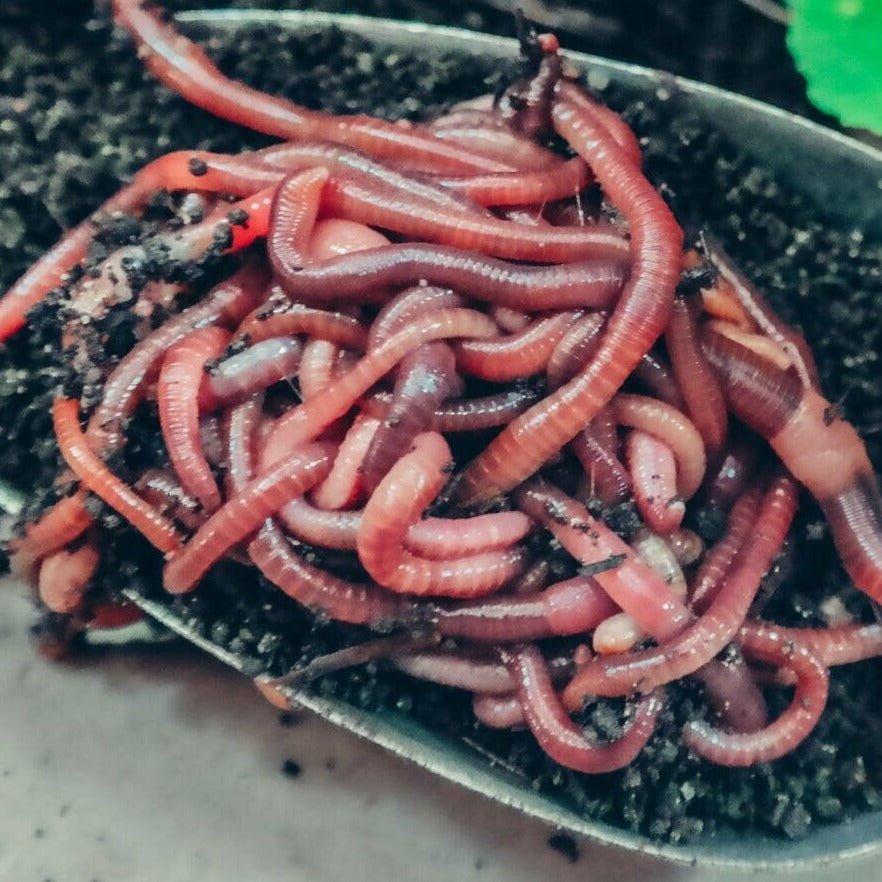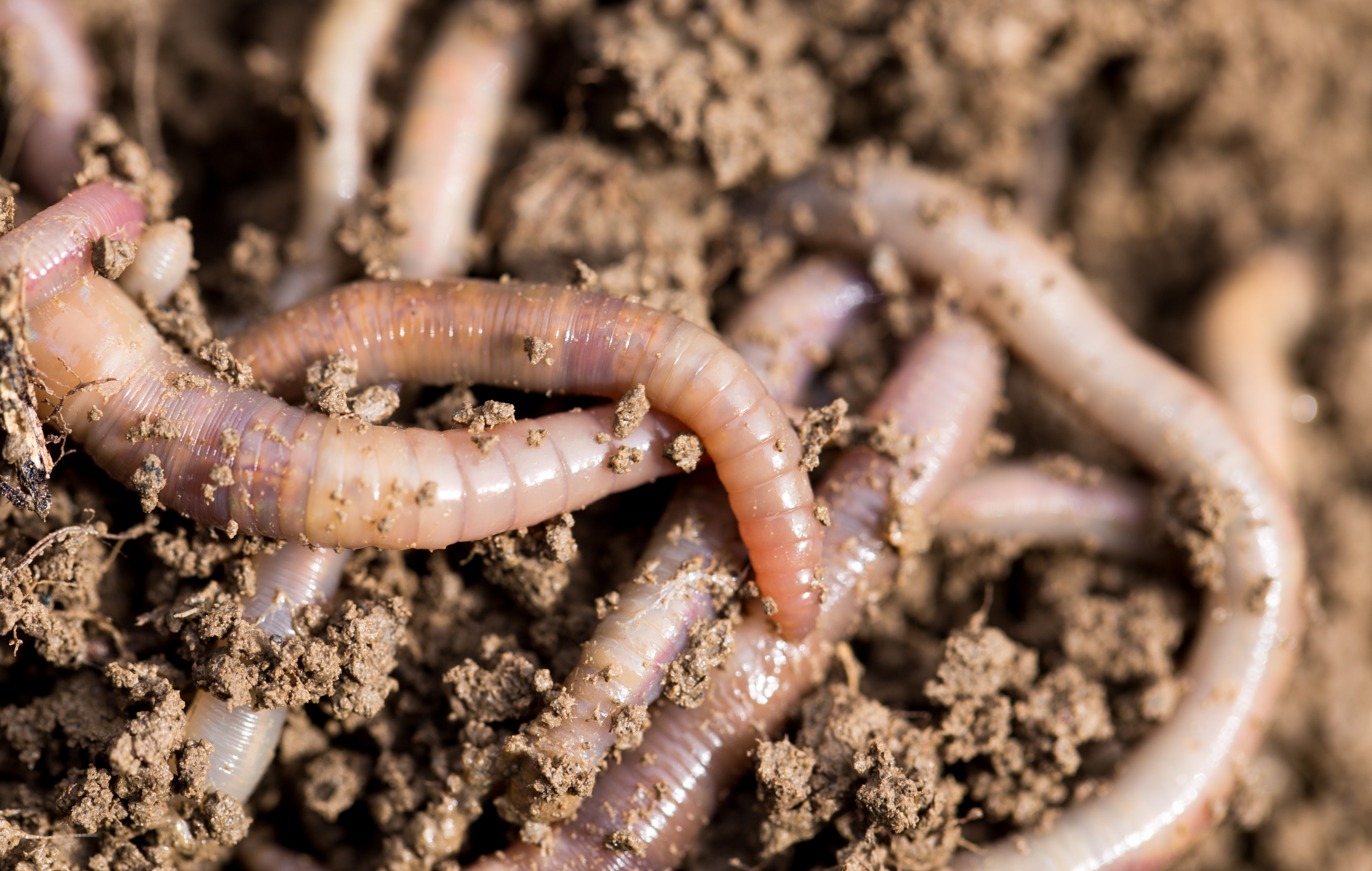Red Wiggler Worms - Important for Healthy And Balanced and Productive Gardens
Red Wiggler Worms - Important for Healthy And Balanced and Productive Gardens
Blog Article
Making The Most Of the Perks of Red Wiggler Worms: A Comprehensive Guidebook for Home Gardeners and Urban Farmers
In the realm of lasting horticulture methods, red wiggler worms stand as unrecognized heroes, silently changing organic waste into nutrient-rich castings that can work wonders for soil health and wellness. By checking out the ins and outs of just how to properly care for and optimize the advantages of red wiggler worms, individuals can unlock a wealth of opportunities for improving the sustainability and performance of their horticulture ventures.
Understanding Red Wiggler Worms
Red Wiggler worms, renowned for their efficient composting capacities, are a species of earthworms widely used in vermiculture techniques. These worms, medically referred to as Eisenia fetida, prosper in decaying natural material, making them excellent candidates for composting (Red Wiggler Worms). Red Wigglers are starved eaters, qualified of eating their very own weight in organic waste daily. Their digestive system process breaks down natural matter into nutrient-rich castings, which are a useful source for improving soil and advertising plant development.
One secret attribute of Red Wiggler worms is their reproductive price. These hermaphroditic animals have both women and male reproductive body organs, allowing them to reproduce rapidly under beneficial problems. A mature Red Wiggler can generate numerous spawn in a brief duration, making sure a constant populace within a composting system.

Establishing a Worm Bin
When developing a worm bin for vermiculture objectives, proper preparation and focus to detail are necessary for developing a conducive atmosphere for Red Wiggler worms. Begin by picking a suitable container for your worm bin. This can be a plastic or wood container with a cover to maintain moisture degrees and shield the worms from light. Ensure that the bin has drain openings at the base to prevent waterlogging.

Location the worm container in a great, dark location away from straight sunlight and severe temperatures. By adhering to these actions, you can establish up a flourishing worm container that will effectively refine organic waste right into nutrient-rich vermicompost for your yard.
Feeding and Maintaining Worms
Guaranteeing a nourishing and well balanced diet is important for the health and wellness and performance of Red Wiggler worms in a vermiculture system. It is important to avoid feeding them citrus fruits, onions, garlic, milk items, meat, and oily foods as these can be harmful to the worms or cause unpleasant odors in the bin.
Appropriate moisture levels are additionally essential for the health of Red Wiggler worms. By diligently checking their diet plan, wetness, and environmental problems, home gardeners and urban farmers can maintain a effective and healthy Red Wiggler worm populace for composting functions.
Harvesting Worm Spreadings
To effectively draw out nutrient-rich worm castings from the vermicompost, a systematic harvesting procedure is necessary for optimizing the composting advantages. Red Wiggler Worms. The very first step in harvesting worm spreadings is to encourage the worms to move to one side of the container. This can be achieved by positioning fresh food scraps on one side and leaving the opposite undisturbed for a couple of days. When most of worms have actually moved to the side with fresh food, the castings can be collected from the opposite side.
After the spreadings have actually been harvested, it is essential to separate any type of continuing to be worms from the castings to prevent harming them go to website throughout storage or application. One efficient technique is to develop cone-shaped piles of castings under intense light. Worms will instinctively move away from the light, permitting for simple separation and removal.
Finally, the collected worm spreadings should be stored in a trendy, dark, and completely dry place to keep their high quality and effectiveness as a nutrient-rich soil amendment. By complying with these actions, home gardeners and metropolitan farmers can optimize the advantages of red wiggler worms in their vermicomposting systems.
Using Worm Castings in Horticulture
The consolidation of nutrient-rich worm spreadings right into yard dirt can significantly improve plant growth and general soil health. Worm castings, likewise understood as vermicast, go are an all-natural fertilizer created by red wiggler worms as they break down raw material. These spreadings are abundant in important nutrients like nitrogen, phosphorus, potassium, and helpful microbes that promote plant growth and boost soil framework.
When using worm spreadings in horticulture, it is important to mix them thoroughly right into the dirt or use them as a top clothing around plants. The slow-release nature of worm castings makes sure a consistent supply of nutrients to plants gradually, lowering the threat of nutrient leaching and advertising long-lasting soil fertility. In addition, worm castings help improve soil oygenation, water retention, and microbial task, developing a healthy and balanced atmosphere for plant roots to flourish.

Verdict
In final thought, the application of red wiggler worms in home gardening and metropolitan farming can dramatically profit soil health and wellness and plant development. By understanding how to establish up and keep a worm bin, feed the worms correctly, and gather their nutrient-rich spreadings, gardeners can take full advantage of the advantages of these earthworms. Incorporating worm castings into horticulture techniques can enhance soil fertility and general plant performance. Overall, red wiggler worms use a efficient and sustainable option for boosting garden and farm yields.
In the realm of sustainable horticulture techniques, red wiggler worms stand as unsung heroes, silently changing natural waste right into nutrient-rich castings that can work wonders for soil health.When establishing a worm container for vermiculture objectives, correct prep work and focus to information are crucial for developing a helpful atmosphere for Red Wiggler worms. The first step in harvesting worm castings is to motivate the worms to move to one side of the container. see it here Worm castings, additionally known as vermicast, are an all-natural fertilizer produced by red wiggler worms as they break down natural matter. By comprehending how to establish up and maintain a worm container, feed the worms properly, and collect their nutrient-rich castings, garden enthusiasts can take full advantage of the benefits of these earthworms.
Report this page